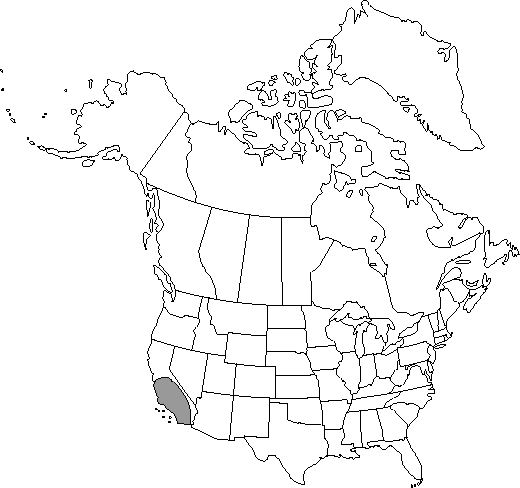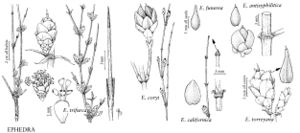Ephedra californica
Proc. Amer. Acad. Arts 14: 300. 1879.
Shrubs erect, 0.25–1 m. Bark gray-brown, cracked and irregularly fissured. Branches alternate or whorled, semiflexible to rigid, angle of divergence about 45°. Twigs yellow-green, becoming yellow, then yellow-brown with age, glaucous, with numerous very fine longitudinal grooves; internodes 3–10 cm. Terminal buds conic, 2–3 mm, apex acute. Leaves in whorls of 3, 2–6 mm, connate to 1/2–3/4 their length; bases at first membranous, then becoming thickened, completely deciduous; apex acute. Pollen cones 1–several at node, ovoid, 6–8 mm, on short, scaly peduncles; bracts in 8–12 whorls of 3, light orange-yellow, ovate, 2–3 × 2–3 mm, membranous, slightly united at base; bracteoles equaling or slightly exceeding bracts; sporangiophores 3–5 mm, exserted to 1/3 their length, with 3–7 sessile to short-stalked microsporangia. Seed cones 1–several at node, ovoid, 8–10 mm, on very short, scaly peduncles; bracts in 4–6 whorls of 3, circular, 5–7 × 5–10 mm, papery, with orange- to green-yellow center and base, slightly clawed, margins entire. Seeds 1(–2), nearly globose, 7–10 mm diam., brown, smooth.
Phenology: Coning March–April.
Habitat: Dry slopes and fans to valley grasslands
Elevation: 50–1000 m
Distribution

Calif., Mexico in Baja California.
Discussion
Selected References
None.
